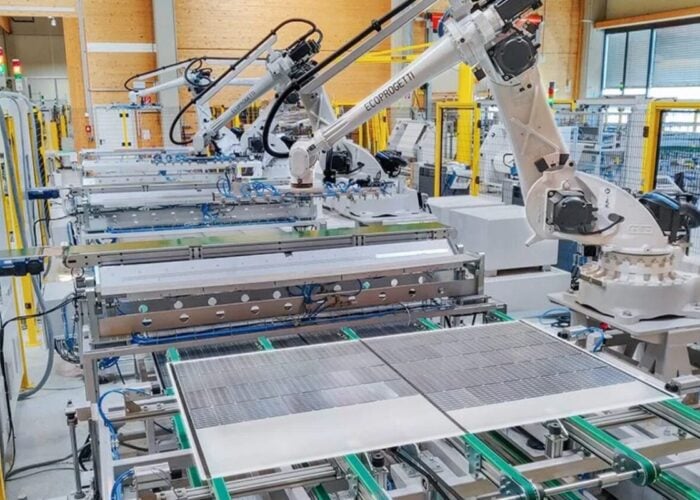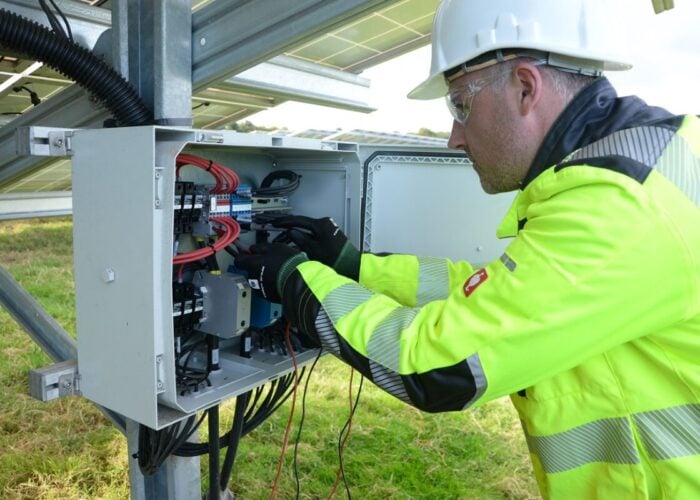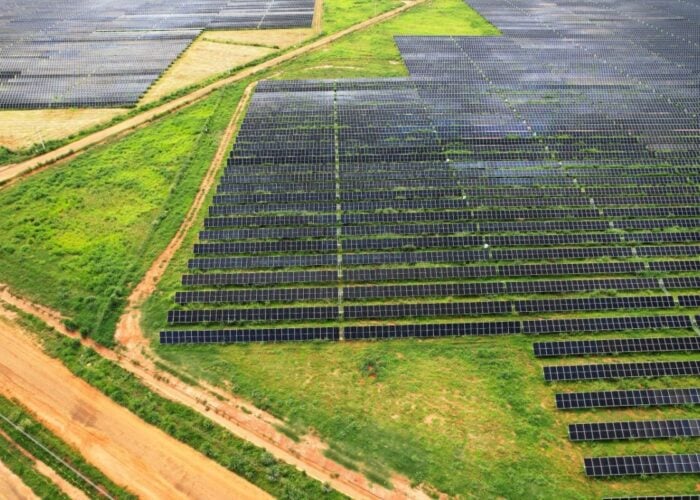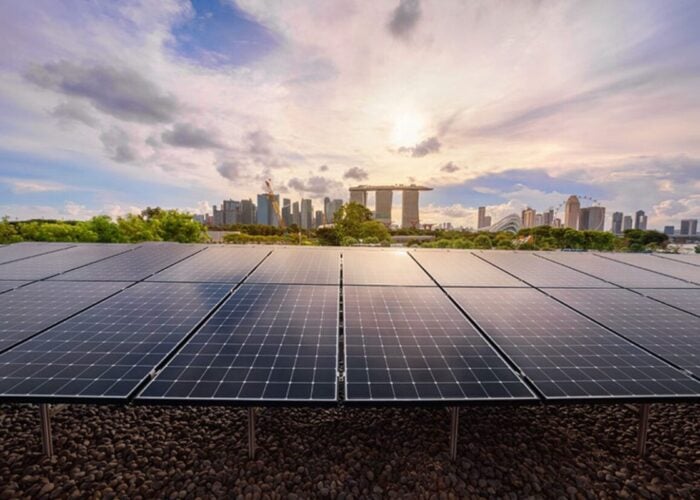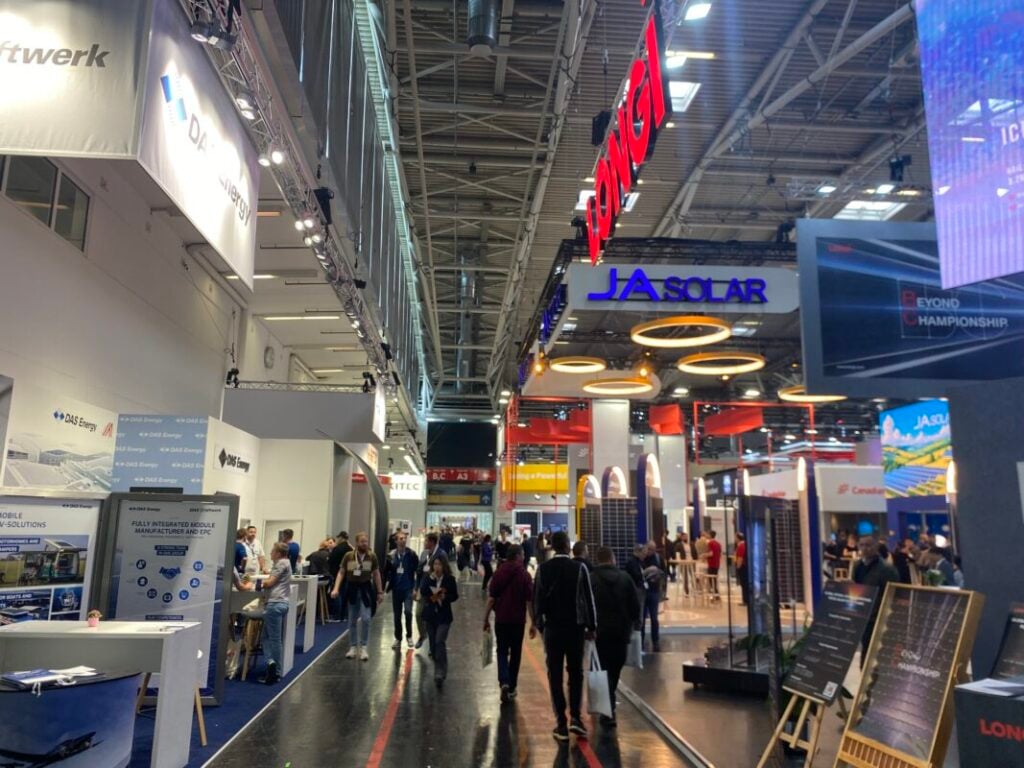
Consolidation among module manufacturers, rumours of capacity relocation and the ascendancy of energy storage emerged as key topics from the bustle of the trade floor at Intersolar Europe 2025.
The grey clouds threatening drizzle over Munich this week could not contrast more with the scorching heatwave which baked Intersolar in June last year. Inside the Messe Munchen, the heat was lowered, too. The crowds between the stalls, though still numerous, seem a touch thinner than last year’s. Busy – yes. But without the edge of excitement which characterised the show last time around.
Try Premium for just $1
- Full premium access for the first month at only $1
- Converts to an annual rate after 30 days unless cancelled
- Cancel anytime during the trial period
Premium Benefits
- Expert industry analysis and interviews
- Digital access to PV Tech Power journal
- Exclusive event discounts
Or get the full Premium subscription right away
Or continue reading this article for free
A major Chinese solar manufacturer told PV Tech that this year was “neutral…business as usual.” Another said that there was less excitement in the PV side of the conference, largely because there was less to be excited about. Most of the big players on show have settled, for now, on tunnel oxide passivated contact (TOPCon) technology—a shift that was a feature of last year’s show.
There is also less money swimming around. The biggest players in module production are all bleeding from the ongoing price wars and incredibly tight margins, while according to SolarPower Europe’s Market Outlook 2025, which was launched at the show, Europe’s PV additions are stuttering amid new political and economic challenges and a readjustment to ‘normal’ after the post-energy crisis gold rush.
Whether this comparatively uninspired atmosphere is here to stay (or whether it is because the European football tournament is not on this year, as it was in 2024) is not yet clear. But from conversations over the course of the show, a number of trends did emerge which seem likely to stand the test of time.
Consolidation comes next
The big Chinese manufacturers apparently do not see any way out of the current price pressures and the razor-thin (sometimes negative) margins they’re enduring. PV Tech reported during the course of Intersolar that the four leading module manufacturers – JA Solar, Trina Solar, LONGi Green Energy and JinkoSolar – all posted losses in Q1 2025. This follows dramatic declines in revenue over 2024.
They also cumulatively shipped 65GW in the first quarter, figures which our team in China reported are large enough to cement “their positions as the top four global PV module suppliers.”
In our conversations in Munich this week, the big players said that the low prices that are squeezing their margins are here to stay and that they will ultimately lead to market consolidation. Smaller companies may not have the appetite or the muscle to sustain the losses and work around the challenges facing the sector. There is already enough manufacturing capacity in the solar supply chain to meet global demand more than twice over, and that level of pressure will likely squeeze smaller companies out.
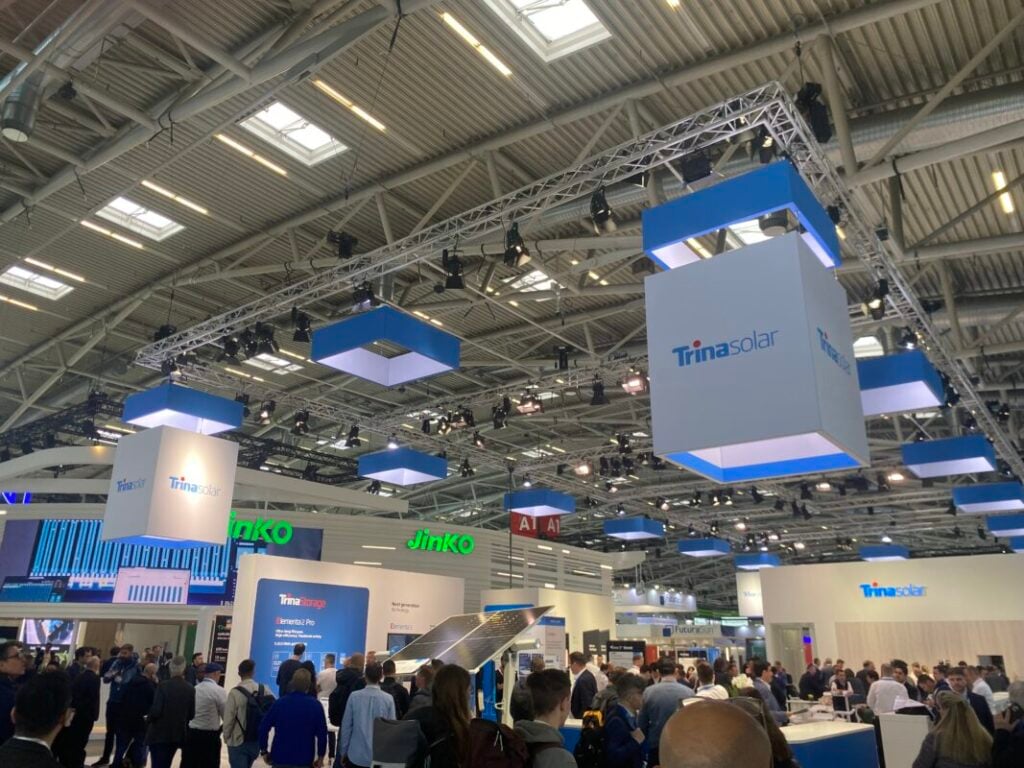
We even heard speculation that big producers outside of the top 4 might back off their module production operations and sidestep into more energy storage or other businesses.
A representative of one major Chinese manufacturer said they “hoped” that global market share would consolidate among the biggest firms. For now, though, the smaller players were still there, still with stalls on the show floor and yet to give up space.
Storage is king
The same contact said that the punters and fellow exhibitors at Intersolar had far more questions about energy storage than solar modules – a marked change from 2024. This reflects a stable technology landscape where all of the big players – with the notable exception of LONGi – were displaying predominantly TOPCon—based offerings. The next two-to-three years are set fair for the technology.
We also heard from energy storage and PV firm Hopewind that around 80% of the enquiries they received were for storage products, when they had expected a 50-50 split.
However, there was some variation in the solar offerings, which led to a busy week for next-generation tech enthusiasts. Last year, PV Tech wrote about the abundance of perovskite tandem cells and prototypes on display up and down the Intersolar halls. This year, those were left to gather dust in warehouses and replaced with a subtler focus on back contact (BC) technology.
The BC evangelist and founder of ISC Konstanz, Radovan Kopecek, told us that in contrast to some of the manufacturers, he found this year’s Intersolar busier than usual. A number of new manufacturing operations, in Europe and elsewhere, made him a popular figure. Kopecek also launched a collaborative white paper with LONGi and Aiko on BC technology; both manufacturers put BC products front and centre of their booths – with LONGi launching a new heterojunction BC module for the residential sector and Aiko an AI-powered ABC module – and displayed the technology’s superior performance under partial shading compared with TOPCon.
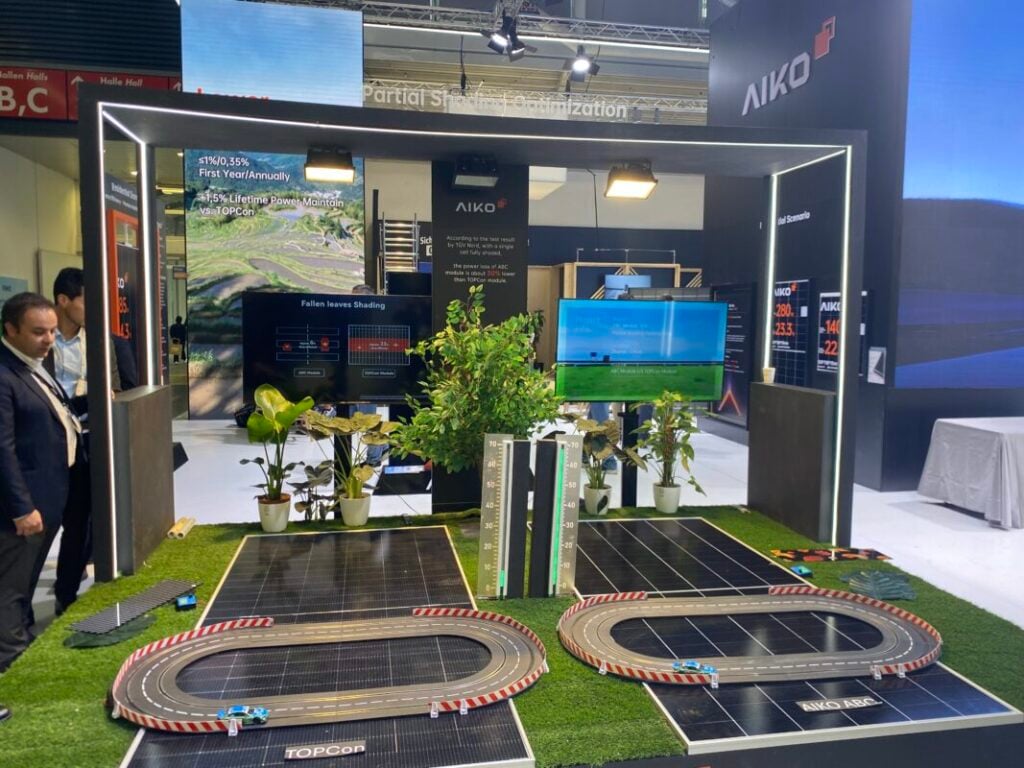
The headline, though, was that the energy storage halls to the north of the main PV area were a busier and louder place. We heard from inverter producers, in particular Austria’s Fronius, which said that the show saw energy storage and energy management solutions come firmly to the forefront.
Quietly shifting
Early on at the show, we heard whispers among some big solar manufacturers that the EU might bring in some protectionist policies to penalise imports. When put to them, some industry figures recognised those concerns while others dismissed them out of hand. A major player, which has paused plans to establish a European manufacturing plant, even said they would welcome the change as the “only way” to bring meaningful solar manufacturing capacity onshore to Europe.
People were more tight-lipped about the impact of Donald Trump’s sweeping tariff agenda on their business. Losing the high-margin US market is a blow for the already strapped Chinese solar manufacturing industry, as US modules sell at a significantly higher price than the rest of the world.
We also heard of solar manufacturing capacity in Southeast Asia lying dormant in the wake of the antidumping and countervailing duty (AD/CVD) tariffs the US has put on many module and cell imports from the region. One manufacturer described a complex supply chain via the as-yet-unaffected Laos, among other countries, forced by the tariffs. Another said that the Southeast Asian capacity, which was built to serve the US market, was too expensive to sell elsewhere and that the chances of redirection into Europe are slim.
Both the AD/CVD and “reciprocal” tariffs have put pressure on manufacturers’ already strained bottom lines. In a recent financial report, the solar manufacturing subsidiary of Canadian Solar, CSI Solar, said it was considering relocating some of its manufacturing capacity to “low tariff regions” as part of efforts to stay profitable.
Our contacts at Intersolar became relatively tight-lipped when this subject came up. Some pointed to the cluster of new Chinese capacity announcements in the Middle East, notably in Oman and Saudi Arabia. Announcements for polysilicon capacity in Saudi Arabia could be the most notable of these, as the US is trying to cease relying on Chinese polysilicon, which overwhelmingly dominates the current market.
Delivery
In the downstream, where the technological offering is becoming increasingly uniform, we heard suppliers of inverters, solar and storage solutions emphasising integration and ease-of-use to gain an edge. Unifying suppliers and installers across multiple products and projects was a theme across the show, with profitability and commercial edge seemingly coming from comprehensive and integrated offerings that are as streamlined and high-quality as possible.


